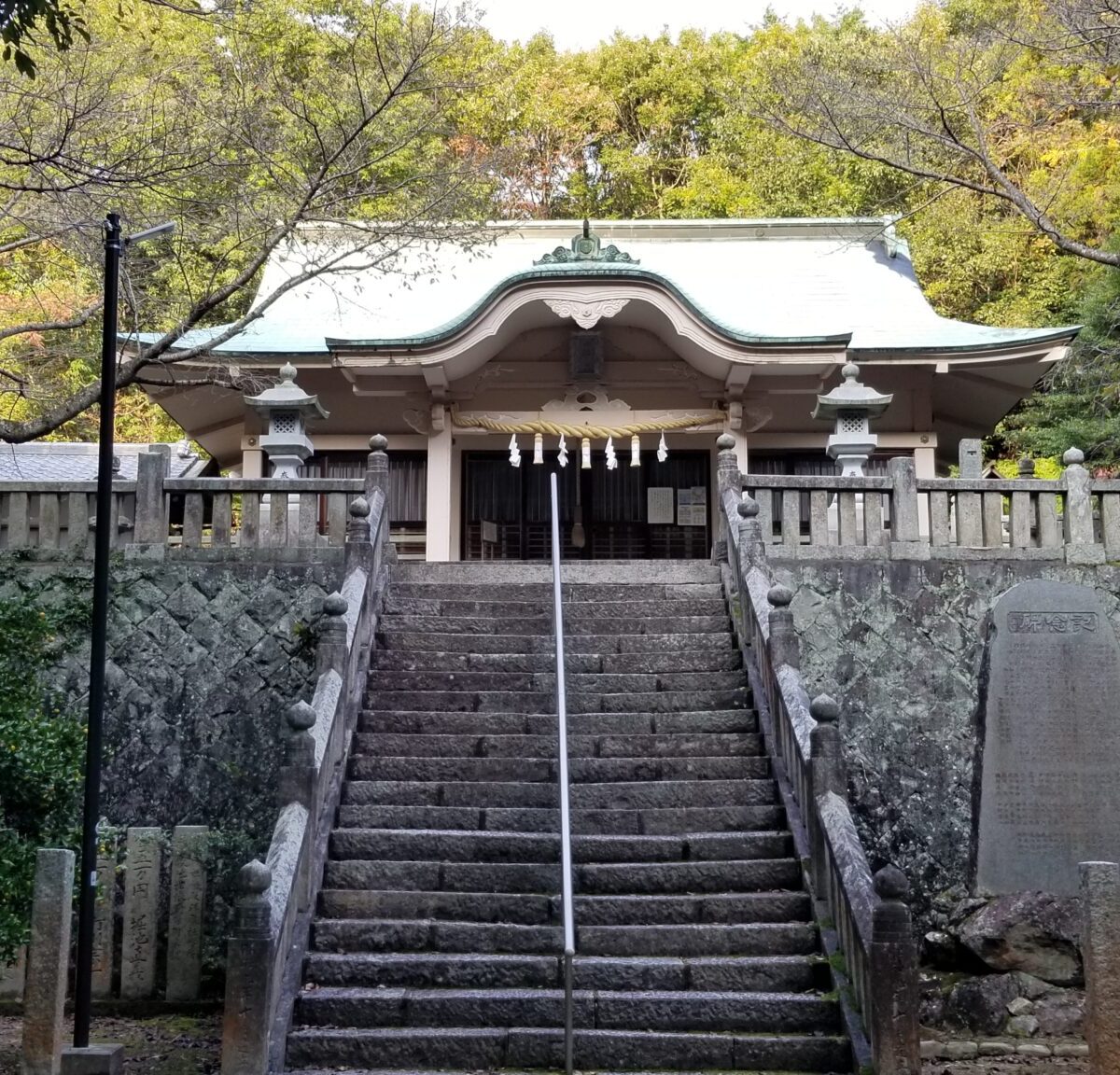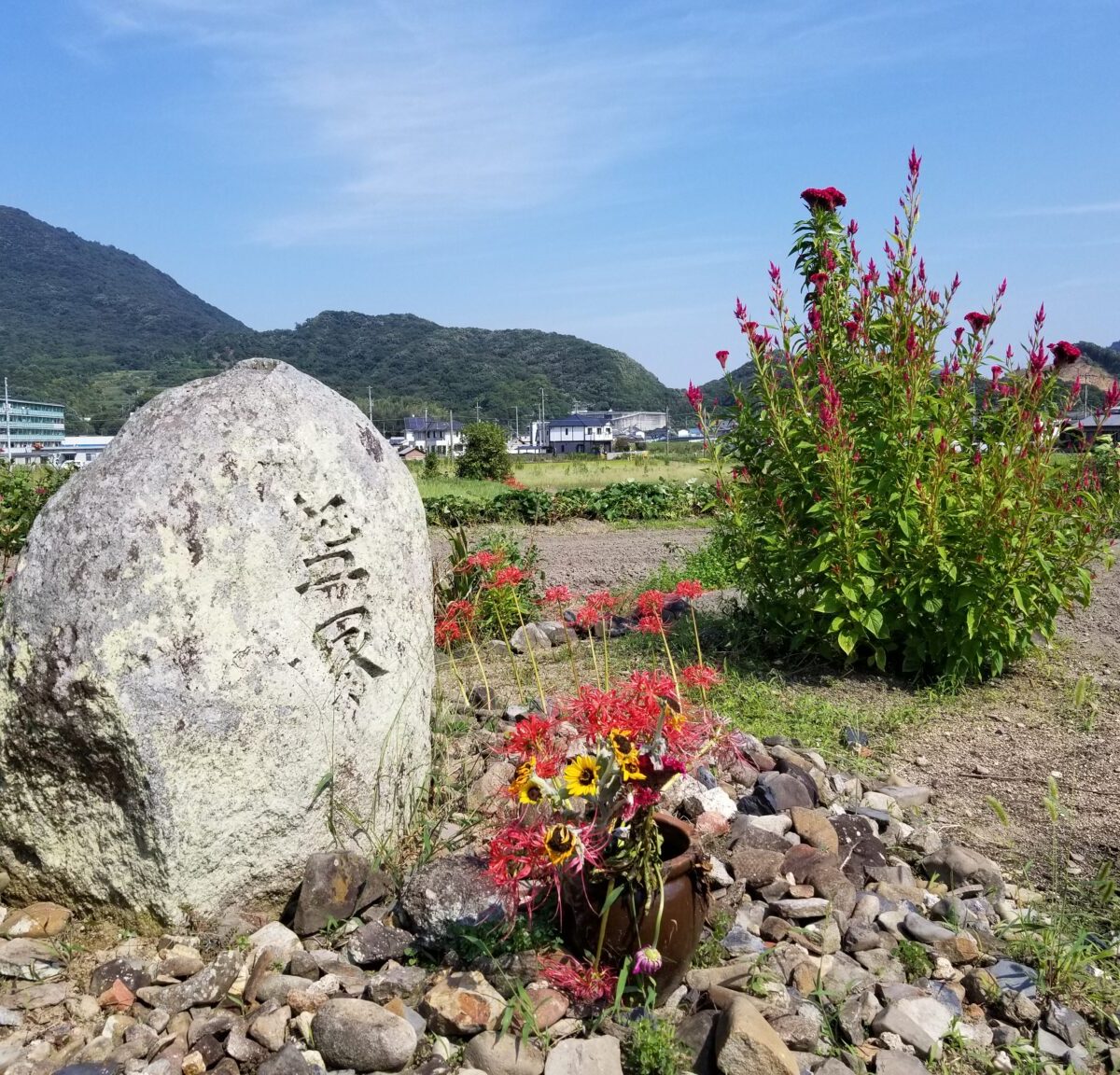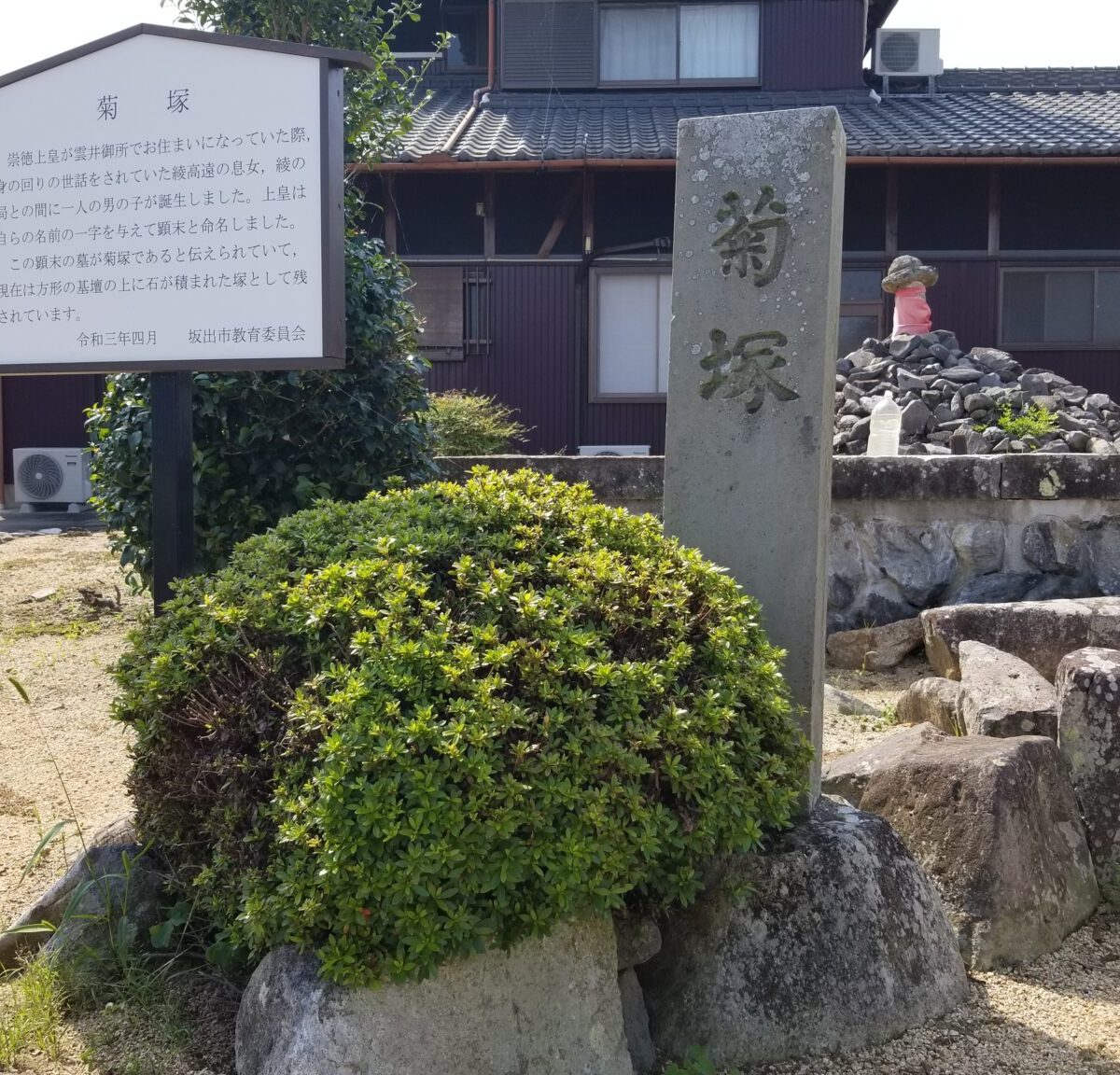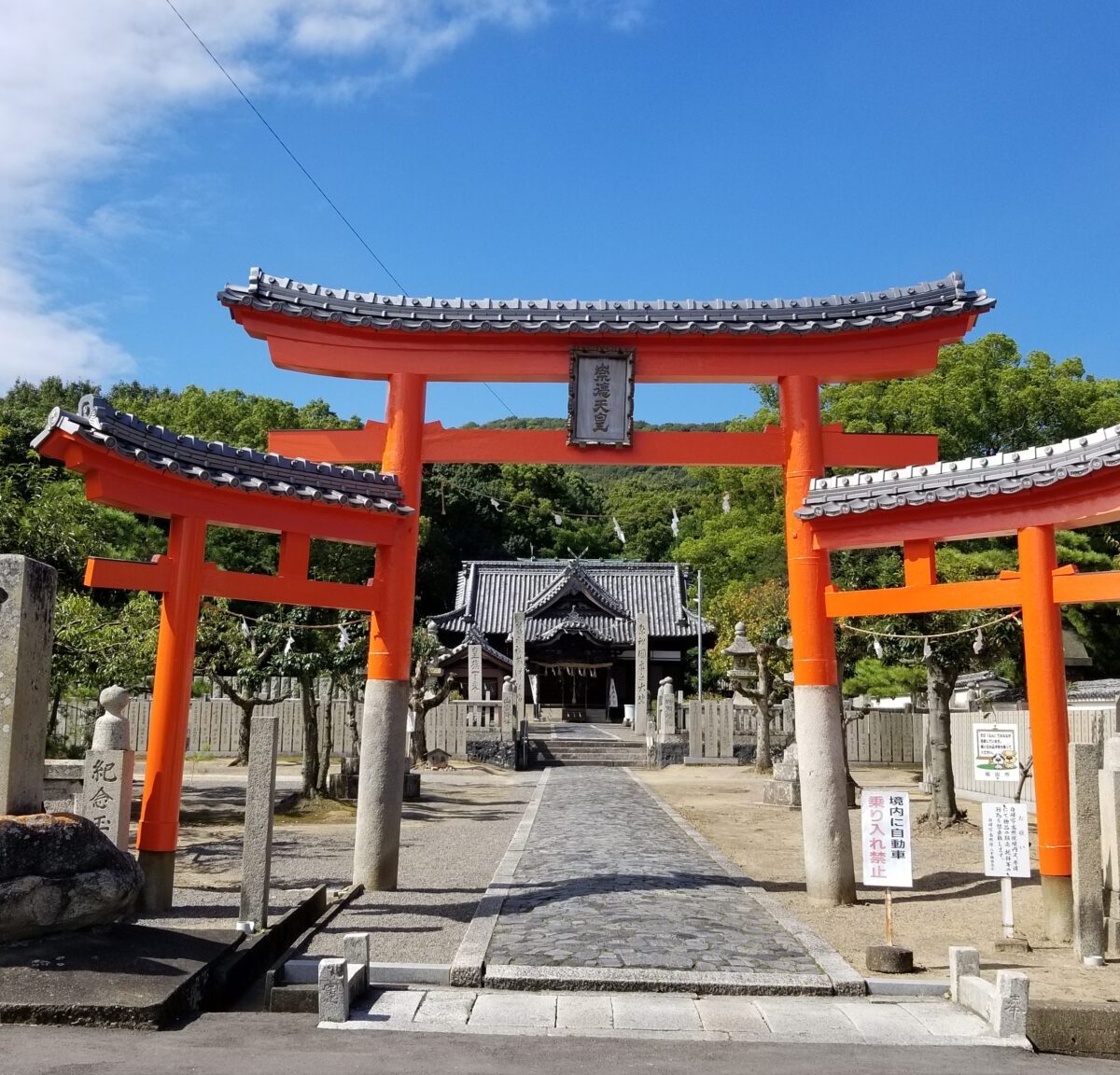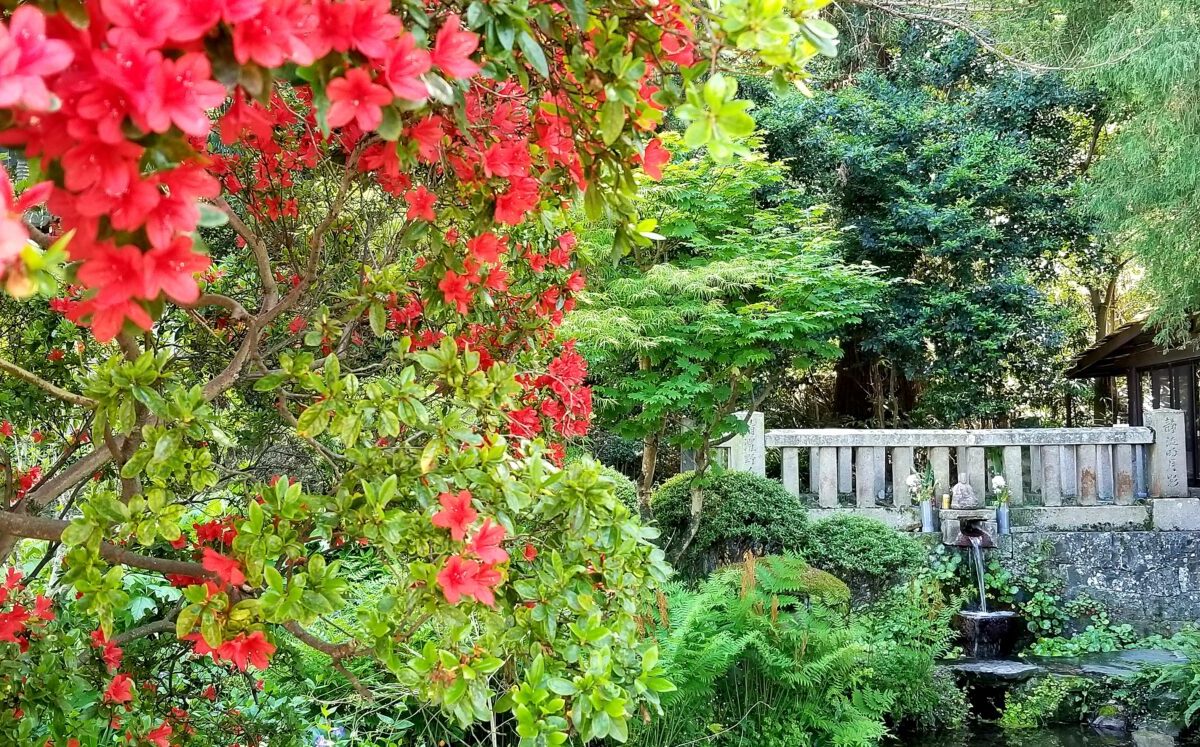Sutoku Emperor Enjoyment Course (One-day Course by Car)

-
About 9 minutes
01 Sakaide Station
-
Bon voyage!
About 9 minutes
-
-
About 2 minutes
02 Himezuka
-
While Emperor Sutoku stayed at the Kumoi Imperial Residence, Aya no Tsubone, the daughter of Aya Takato, took care of him. Eventually, a prince and a princess were born between them, but the princess passed away at a young age.
Himezuka, located at the site of Chomeiji Temple, is said to be the tomb of the princess.
About 2 minutes
-
-
About 6 minutes
03 Kumoi Imperial Residence
-
When Emperor Sutoku was exiled to the Sanuki region, his official residence had not yet been completed, so it is said that he used the residence of Aya Takato, an official in the local government, as a temporary imperial residence.
The emperor, feeling lonely due to the rural and isolated nature of the countryside, longed for the capital and composed a poem: “Here too has become an unreal Kumoi (Imperial Residence), under the shadow of the moon moving through the sky.” From this poem, the temporary residence came to be known as Kumoi Imperial Residence.
About 6 minutes
-
-
About 6 minutes
04 Matsuyama Port
About 6 minutes
-
-
About 7 minutes
05 Oumi Shrine
-
After climbing the mountain from Oumi Shrine, Emperor Sutoku’s cremation took place at Chigogatake on the summit of Shiramine. During the cremation, purple smoke lingered and did not disperse, so a shrine was built at that location.
This is Oumi Shrine, also known as the Shrine of Smoke, located at the base of the mountain.
About 7 minutes
-
-
About 10 minutes
06 Takaya Shrine
-
Long ago, the Takaya clan lived here and enshrined their ancestor Tendo-ne Mikoto as their local deity. The shrine was also called “Mori no Miya” by the villagers and was granted a lower fifth rank in the 9th year of the Jōgan era.
On the way to Emperor Sutoku’s funeral procession, a sudden storm broke out when they reached Takaya Shrine (Takaya Town), so they placed the coffin on a large stone. Blood dripped from the stone.
The stone pedestal where the coffin was placed still remains in the shrine grounds, and Takaya Shrine is also known as “The Shrine of Blood.”
About 10 minutes
-
-
About 22 minutes
07 Emperor Sutoku's Shiramine Imperial Mausoleum / Shiramine-ji Temple
-
Shiramine-ji Temple, the 81st temple of the Shikoku 88 Temple Pilgrimage, is located in the mountains of Shiramine, Goshikidai.
According to the Shiramine Engi, written in 1406 (Ouei 13), the temple’s foundation is described as follows:
In the early Heian period (815 AD), Kobo Daishi climbed Shiramine for training, buried a sacred jewel, and dug the “Akai” well.
Later, Chisho Daishi, the nephew of Kobo Daishi, along with an old man (the incarnation of Shiramine Daigongen), retrieved a piece of driftwood glowing with a strange light from the Seto Sea. He carved a statue of Senju Kannon from it as the main deity and built the temple complex.
Thus, Shiramine-ji Temple was founded.
Shiramine-ji is considered to have been established in the Heian period due to the practice of building mountain temples for training by Shingon and Tendai sects during that time, and the discovery of roof tiles with Heian-era patterns.
Furthermore, in 1164 (Chokan 2), Tonshoji Temple was built within Shiramine-ji to pray for the soul of Emperor Sutoku.
About 22 minutes
-
-
About 10 minutes
08 Tsuzumigaoka Shrine
-
Tsuzumigaoka contains a tomb said to be the burial place of King Sarureio, and in front of it stands a shrine dedicated to Emperor Sutoku.
Nearby is the Gikodo Hall, built in Taisho 2 (1913) as a replica of the Emperor’s residence, the Konomaru Palace.
-
Dairi Spring
Located just north of Tsuzumigaoka Shrine, this well is said to have been used by Emperor Sutoku during his stay at Konomaru Palace.
It is called the Dairi Spring, and local people have carefully avoided using it, as it was said that using its water would cause eye problems.
Due to its location in a valley, the spring reportedly never dried up, even during severe droughts.
-
Wan-zuka
North of Tsuzumigaoka Shrine, northeast of Kikuzuka, there remains a natural stone inscribed with “Wan-zuka,” said to be where Emperor Sutoku’s used tableware was buried.
-
Kikuzuka
Emperor Sutoku named the prince born between him and Aya no Tsubone as Akisue, giving him the chrysanthemum crest and entrusting him to Aya no Tsubone’s father, Aya Takato, as heir to the Aya family.
The prince’s tomb, known as Kikuzuka, is located north of Tsuzumigaoka Shrine.
The tomb is a mound of stones atop a square platform and is now part of a private garden.
About 10 minutes
-
-
About 1 minute
09 Shiromine-ji
-
After Emperor Sutoku’s body was cooled at Yasoba Spring, it was cremated at Chigodake on Mt. Shiramine. The area was illuminated each night, leading it to be called “Myō no Miya” (Shrine of Light).
This shrine, dedicated to Emperor Sutoku, is affectionately known as “Tennō-san” by the locals.
-
Eshibozaka
About 1 minute
-
-
About 9 minutes
10 Yasoba Spring
About 9 minutes
-
-
11 Sakaide Station
![Sutoku Emperor Enjoyment Course (One-day Course by Car) - [Official] Sakaide City, Kagawa Tourism & Travel Guide | Odekake Kakehashi Sakaide](https://sakaide-kankou.com/en/wp-content/themes/sakaide-kankou-theme/src/img/svg/hero-banner-black.svg)





